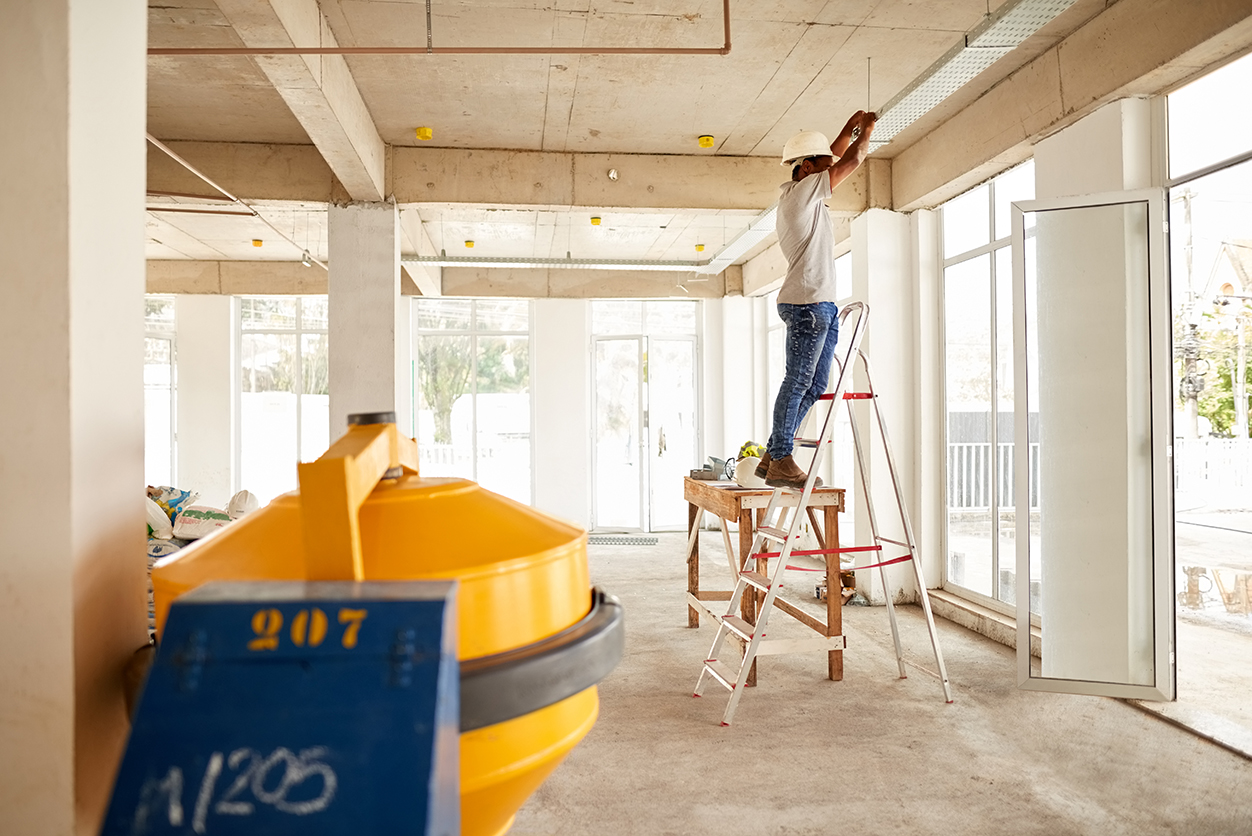Danger. High Voltage. Case Note: Los Compadres Pescadores, L.L.C. v. Juan Valdez, et al.

The Texas Supreme Court in Los Compadres Pescadores, LLC v. Juan Valdez, et al., recently explored what constitutes a dangerous condition to an improvement to property that caused a construction work-site injury. The Court also addressed the types of evidence it found conclusive in holding a property owner vicariously liable for the acts of a 1099 independent contractor.
Los Compadres Pescadores, the property owner, planned to build a 4-unit condominium building on South Padre Island. A high-voltage powerline ran about 24 feet above the back property line through an easement. It was undisputed that everyone knew the powerline was there, but it was disputed whether everyone knew whether the lines were electrified.
Los Compadres Pescadores hired a superintendent, Luis Torres, as a 1099 independent contractor to manage and supervise the project. Torres hired Paredes Power Drilling to construct the concrete pilings for the foundation. Before Paredes Power Drilling began its work, another subcontractor built a retaining wall along the back property line and added fill to the property to level it out. This brought the ground elevation at the back property line closer to the high-voltage powerline.
After Paredes Power Drilling notified Torres that the powerline was too close to the worksite, Torres instructed Paredes Power Drilling to begin drilling and installing the pilings at the front of the property and gradually work towards the back property line to give Torres time to “take care of it”. As Paredes Power Drilling was installing 20-foot lengths of rebar in the dilled shafts along the back property line, one of the rebar pieces touched the high-voltage powerline, injuring Valdez and Teran, two employees of Paredes Power Drilling. Valdez and Teran sued Paredes Power Drilling and the powerline owner, AEP. AEP joined Los Compadres Pescadores to the suit.
Under Chapter 95 of the Texas Civil Practices and Remedies Code, the statute applying to personal injury claims against property owners, an injured plaintiff must prove that the owner had “actual knowledge” of the condition. This is a heightened evidentiary standard from a typical premises liability claim which only requires proof that the defendant reasonably should have known of the condition.
The Court focused on the requirement in Chapter 95 that the injury “arise from the condition of use of an improvement to real property where the contract or subcontractor constructs, repairs, renovates or modifies the improvement”. Among the issues the Court considered were what qualifies as an improvement and when does a “condition” exist in relation to an improvement?
To apply the heightened “actual knowledge” standard to as much of the project as possible, Los Compadres Pescadores argued that the “workplace”, including the powerline, was the entire property. After explaining that a workplace, regardless of size, may include several improvements, the Court stated that it is not enough for the dangerous condition be present in the workplace. Instead, the condition must be present on “the improvement” within the workplace on which the injured plaintiff was working.
The Court first examined whether the drilled pilings constituted an improvement to the property. In finding that they did, the Court defined “improvement” broadly as an addition to real property that can be removed without causing injury to the real property. Aside from the poured-in-place reinforced pilings, the Court characterized the foundation and the entire condominium building as improvements. As applied to Valdez and Teran’s claims, the pilings were the improvements.
The Court next examined whether Valdez and Teran’s injuries arose from a “condition” or use of the pilings. After defining “condition” somewhat nebulously as an “intentional or inadvertent state of being”, the Court noted just because a condition exists on property, in general, does not mean the condition exists on the improvement. For a condition on the property to be a condition of the improvement, the condition must affect the state of being of the improvement.
What is the distinguishing factor between a condition to the property and a condition to an improvement? Apparently, proximity. If the condition is not close to the improvement, then it is not a condition of the improvement. More specifically, “if a dangerous condition, by reason of its proximity to an improvement, creates a probability of harm to one who ‘constructs, repairs, renovates, or modifies’ the improvements in an ordinary manner, it constitutes a condition of the improvement itself.”
As this relates to Valdez and Teran’s claims, the Court held that the energized powerline constituted a dangerous condition to the pilings. Valdez and Teran were directly exposed to the electrified powerlines—the dangerous condition—because of its close proximity to the improvement on which they were working—the pilings. As a result, the higher standard of “actual knowledge” applied to their claims. Despite winning the battle, Los Compadres Pescadores lost the war. The Court affirmed the lower courts’ ruling that plaintiffs had conclusively proven that Los Compadres Pescadores’ agent, Torres, had actual knowledge that the powerline was present and energized.
In dicta, the Court provided some standards for determining whether Los Compadres Pescadores was vicariously liable for its 1099 independent contractor, Torres. Torres signed the building permit as the “agent of the owner” and held himself out as the owner’s agent. Los Compadres Pescadores’ managing owner testified (mistakenly) that Torres was an employee, was paid a salary, and was responsible for running the project. Perhaps most damning, Los Compadres Pescadores’ own expert witness testified that Torres was an employee of Los Compadre Pescadores and was acting on its behalf. The Court characterized this evidence as conclusively proving that Torres was an agent of Los Compadres Pescadores and controlled the work that led to Valdez and Teran’s injuries.
Construction worksite injuries are rarely straightforward. They routinely involve issues relating to Chapter 95 and allegations that one party is or should be vicarious liability for another. The attorneys in our Austin and Dallas office are available to answer any questions you may have regarding construction and worksite injuries. Please contact us at info@gstexlaw.com with any questions you may have.
Legal Disclaimers
This blog is made available by Gerstle Snelson, LLP for educational purposes and to provide general information about the law, only. Neither this document nor the information contained in it is intended to constitute legal advice on any specific matter or of a general nature. Use of the blog does not create an attorney-client relationship with Gerstle Snelson, LLP where one does not already exist with the firm. This blog should not be used a substitute for competent legal advice from a licensed attorney.
©Gerstle Snelson, LLP 2021. All rights reserved. Any unauthorized reprint or use of this material is prohibited. No part of this blog may be reproduced or transmitted in any form or by any means, electronic or mechanical, including photocopying, recording, or by any information storage or retrieval system without the express written permission of Gerstle Snelson, LLP.

